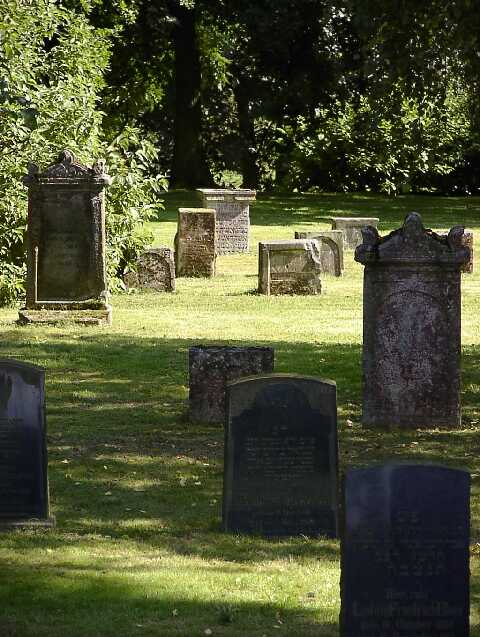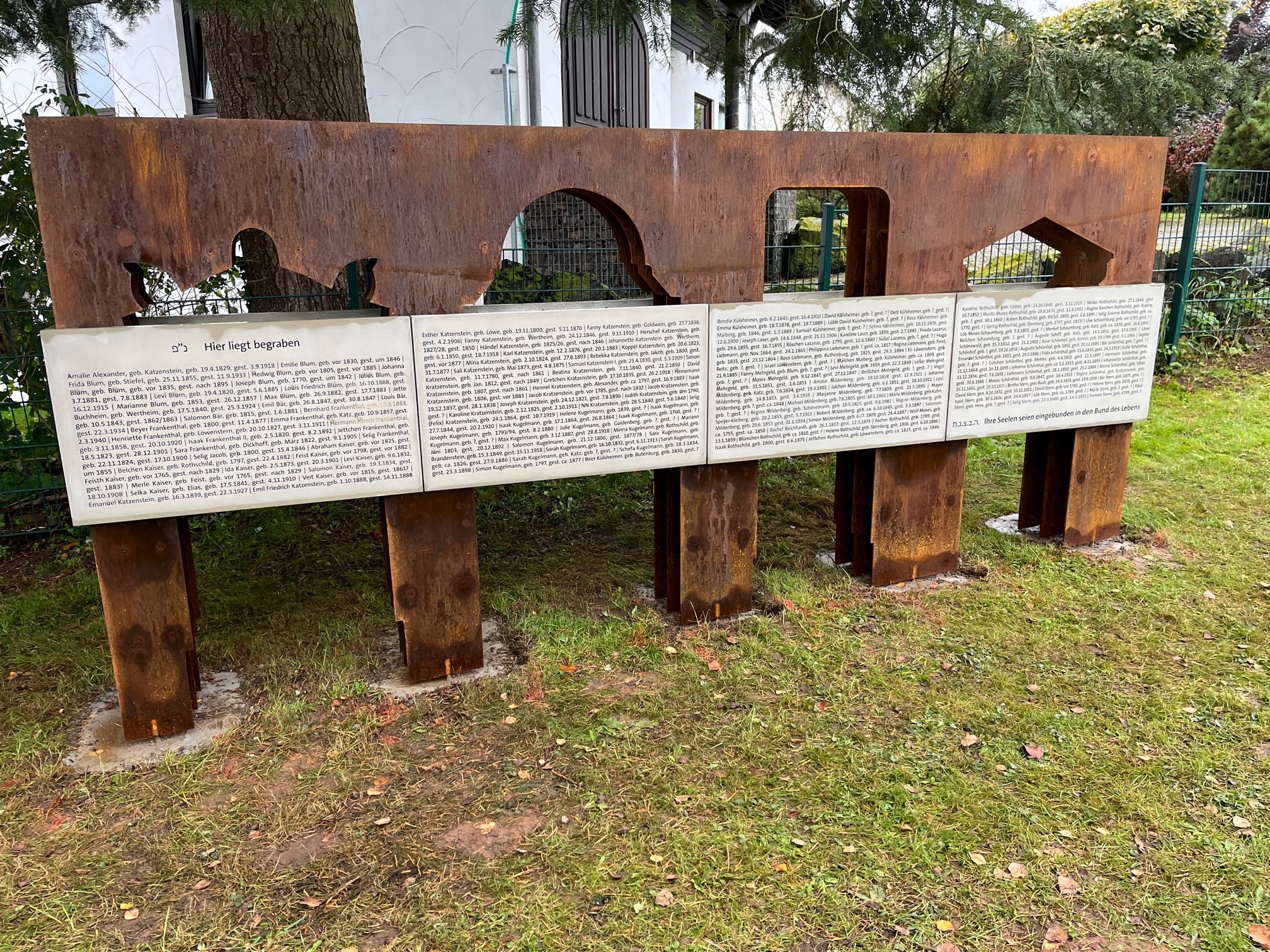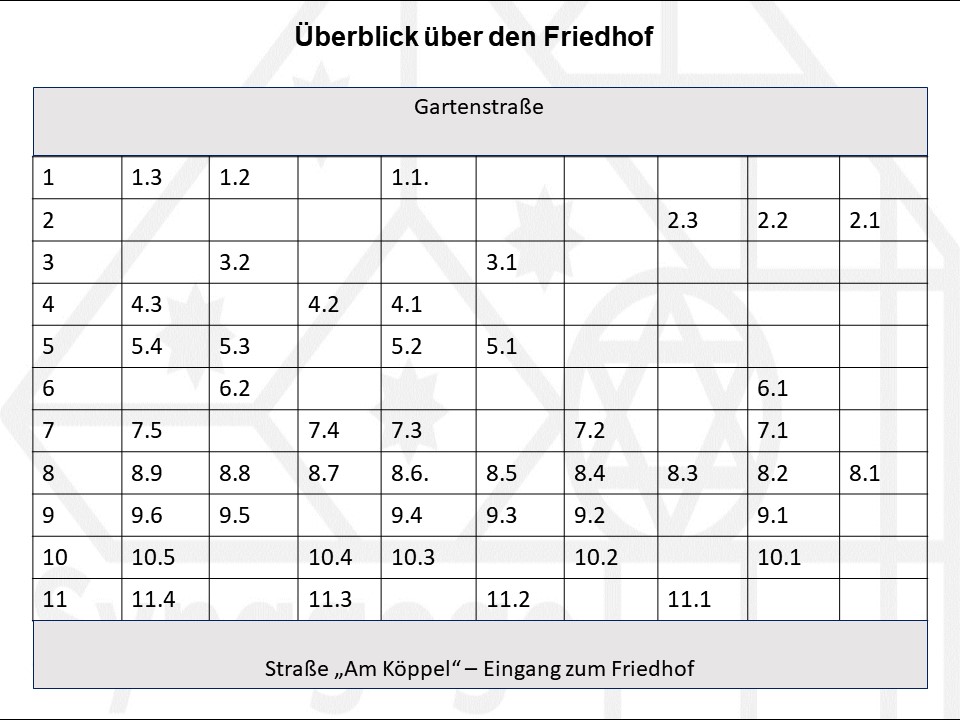
©Kurt-Willi Julius
A. Documentation of the Jewish Cemetery at Vöhl/Edersee
Written down and translated from Hebrew by Christiane Hilmes; summer 1991
read more
Pictures of the individual graves can be found under 2 and 3.
1. Introduction
The Jewish cemetery in Vöhl exists since the thirties of the 19th century. Before that the Jews of Vöhl used the Jewish cemetery in Frankenau/Eder [1] .
46 gravestones still exist - in February 1967 there are said to have been 60 to 70 [2]. Partly they are no longer decipherable. In one type of gravestone a marble or metal plate was inserted into local stone. These slabs have all disappeared. Since there are these gravestones also at the Marienhagen cemetery, they can be dated to the twenties of this century.
The stones are sometimes partly stuck in the ground, so that not the whole text can be read. One stone (1.1) is upside down.
The stones are numbered as follows: The first number indicates the row, the second the number in the row.
2. Overview of the cemetery (not to scale)
For details about the graves: Please click on the pins!
3. Alphabetical index of graves
Names and gravestones are linked!
The German text on the tombstones is hardly distinguishable from those of the Christians. In the Hebrew text the date of death is found in Jewish time calculation.
The Jews count the years since the creation [3]. According to this we are in the year 5751. On the gravestones the year is always given in "small count". That means that the thousand number 5 is omitted. After that we are now in the year 751.
While we arrange our months according to the sun, the Jews have a moon calendar. Every few years, leap months are inserted to bring the year back in line with the sun. That's why the months always correspond only approximately with the ones we are used to.
The following is noticeable at the Jewish cemetery in Vöhl, but also applies to other cemeteries:
1. the symbol of the Jewish star appears from about 1900 on.
2. the later people were born, the more German names they received. While Jewish children were still called Selig and Rahel around 1800, names like Hermann and Ludwig were more fashionable from about 1850. However, they also received a Hebrew name.
3. on the earlier stones one side is written in German, the other in Hebrew. Later both were written on one side, the second side remained blank.
4. on the older stones there are sometimes quite interesting things written in Hebrew text. The newer the stones are, the more stereotyped the Hebrew text becomes.
[1] Cf. Arnsberg, Paul; Die jüdischen Gemeinden in Hessen. Anfang - Untergang - Neubeginn, vol. 2, Frankfurt 1971, p. 329.
[2] Ibid.
[3] When this counting of time was introduced, it was at least thought that this was the age of the earth.
The text above is - also in the footnotes - to a large extent a transcription of the work of Christiane Hilmes. In a few cases a correction was made by Karl-Heinz Stadtler after consultation with her.
Additional remarks to the individual graves were made by Karl-Heinz Stadtler and are marked in detail.
The text parts were digitized and supplemented by new photos by Kurt-Willi Julius in December.
B. Plaque at the jewish cemetery

Foto: Karl-Heinz Stadtler
On Thursday, 19th of october 2023 a memorial was inaugurated to remember all buried jews at the Cemetery.
C. Essay about the Jewish Cemetery in Voehl
von Karl-Heinz Stadtler
The history and Jewish funeral rites are described in the essay Der jüdische Friedhof in Vöhl
D. Jewish Cemetery in Voehl on the Website „findagrave“
Camille Calman, whose ancestors from the Rothschild family left Vöhl for the USA as early as the mid-19th century, photographed the gravestones in 2019 and published them on the findagrave website.
„Vohl, Landkreis Waldeck Frankenberg, Hessen, Germany“
This is the largest collection of burial data in the world and is based in the Utah, USA.



